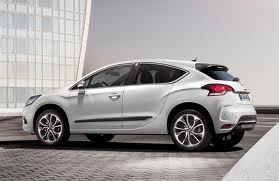


This edition of the Honda NSX 3.0 V6 Auto is the 4 speed / Auto version and was first brought out in 1998. This was at around the same time as the introduction of the and the .This particular Honda NSX has a 2977cc Naturally Aspirated Petrol powerplant with 6 cylinders in a V formation.
The NSX shares its Petrol V6 engine configuration with the likes of the 2014 Radical RXC 3.5 V6 Twin Turbo and the 2015 Radical RXC Turbo 500 3.5 V6. If you're looking for other fast cars which share the NSX's Rear Wheel Drive, Coupe combination then how about the 1982 Fiat X1/9 1.5 8V or the 1965 Aston-Martin DB6 1965.
Weighing in at 1430 kgs (3152 lbs) this makes the Honda NSX 3.0 V6 Auto in the same weight category as the 2023 Lotus Emira First Edition i4 2.0 Turbo or the give or take 50kg.
In terms of power the 2977cc 24V V6 engine produces 255 bhp (190 kW) @ 6600 rpm similar to the 2022 Hyundai i30 N Performance 2.0 Turbo (276 bhp) or the 2021 Ford Mustang Mach-E AWD (266 bhp).
The Naturally Aspirated V6 throws out 209 lb-ft (283.3 Nm) @ 5400 rpm placing it with cars of similar torque performance figures such as the 2020 Abarth 695 70th Anniversario 1.4 Turbo (184 lb-ft) or the 2020 Audi A1 A1 Sportback 35 TFSI S tronic S line (184 lb-ft).
If one combines the weight with power or torque performance for the Honda NSX you can get a better idea of it's real world performance.
![Audi A3 S3 2.0 Turbo Sportback - [2016] image Audi A3 S3 2.0 Turbo Sportback - [2016] image](/editionimages/1786.jpg)
The 2016 Audi A3 S3 2.0 Turbo Sportback (203.3 bhp per ton) has similar Bhp Per Ton stats as the Honda NSX.
The Honda NSX has a Power to weight ratio of 178.3 bhp per ton and 146.1 lb-ft per ton. Bhp Per Ton figures of the 1998 NSX competing with the 2016 Audi A3 S3 2.0 Turbo Sportback (203.3 bhp per ton) or the 2017 Volkswagen-VW Golf R 4Motion DSG 2.0 Turbo (203.3 bhp per ton).
If you agree with the late great Carroll Shelby then arguably an even better indicator of potential performance, Torque. Use weight as well and you end up with - Torque per ton, with the Honda NSX generating around 146.1 lb-ft per ton. If you're curious as to what other cars have as much torque to weight then look no further than the 1992 BMW 5 Series M5 E34 (171.0 lb-ft per ton) or the 1971 Maserati Indy 4.7 V8 (170.9 lb-ft per ton).
With a 0-60mph time of 7.30 secs or a 0-100km/h (0-62mph) of 7.5 secs, this made the Honda NSX 3.0 V6 Auto as fast as the 2019 Peugeot 508 PureTech 225 GT S and S (7.30 secs) the 2013 Subaru BRZ 2L 210ps (7.30 secs) the 2013 Volkswagen-VW Golf GTD DSG 2.0 Turbo Diesel (7.30 secs) the or the 2013 Vauxhall-Opel Insignia 2.0 SIDI Turbo 4x4 (7.30 secs). This Honda NSX 3.0 V6 Auto is also faster than the 2019 Ford Focus ST 2.0 EcoBlue (7.40 secs) the 2013 KIA Pro Ceed GT 1.6 Turbo (7.40 secs) the 2012 Volkswagen-VW Beetle 2.0 TSi Cabriolet (7.40 secs) the and the 2012 Mini Cooper S Paceman (7.40 secs).
When talking about the performance of the Honda NSX on the drag strip it can reach a quarter mile in an estimated 14.7 secs @ 93.1 mph. Similar performance down the quarter mile can be found with the the 2017 Hyundai i30 N 2.0 Turbo (14.64 secs), the 2022 Volkswagen-VW Arteon 2.0T (14.64 secs), and the 1974 Lancia Stratos 2.5 V6 (14.65 secs).
Modern performance cars are often artificially restricted to 155mph. The 1998 version of the Honda NSX 3.0 V6 Auto has a maximum speed of 162mph.
If maxing out your car on the AutoBahn is your thing and you're wondering what's faster than the 1998 Honda NSX 3.0 V6 Auto then how about the 2020 Ford Mustang Shelby GT350 5.2 V8 (173 mph), the 2020 Ford Mustang Shelby GT350R 5.2 V8 (173 mph), or the 2014 Porsche Boxster GTS PDK (173 mph).










Jaguar E Type 5.3 V12
Engine: Naturally Aspirated Petrol | 5344cc 24v V12
Top Speed: 217.2 kph
0-100kph: 7.6 seconds



















